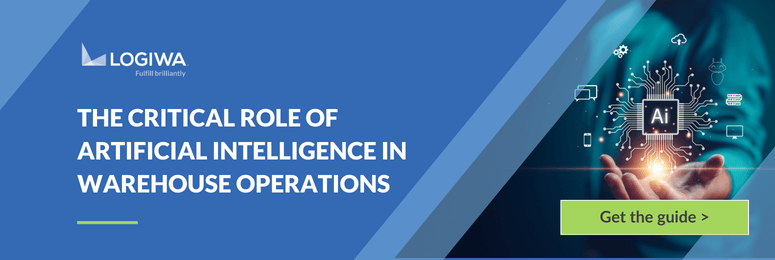Forecasting: What is Forecasting and Why is it Important for Businesses
Today’s business world requires an agile strategy interpretation and an effective operational management system in order to evolve beside the rapidly changing business climate. At this stage, forecasting comes into play and enables companies to plan ahead for unexpected events. Here you can find everything about forecasting in businesses, including forecasting cash flows, the basic principles of business forecasting, and how you can implement various forecasting techniques that will seamlessly integrate into your business planning strategies.
In this article, you’ll delve into the world of business forecasting from a first-person perspective, exploring the importance of forecasting for businesses in our rapidly changing business landscape. By the end, you’ll have a solid grasp of the principles, techniques, and distinctions between forecasting and budgeting.
Key Takeaways:
- Understand the core concept of forecasting and how it empowers businesses with the ability to predict changes, from expenditures to profits, using historical and current data.
- Learn the pivotal role of forecasting in business operations, particularly in understanding demand, and how it aids in making informed decisions about production, personnel, and marketing.
- Explore the significance of inventory forecasting, which helps minimize risks, optimize financial decisions, and align order fulfillment with marketing plans.
- Discover how effective inventory forecasting reduces costs, improves customer service by avoiding stockouts, and streamlines production cycles.
- Differentiate between qualitative and quantitative forecasting techniques, understanding their suitability in different business scenarios and how they rely on non-numerical data or historical data spans. Additionally, grasp the distinctions between forecasting and budgeting, including their objectives and uses in financial planning.
Contents
What is Forecasting?
It is safe to say that every company dreams of a scenario where they can see into the future of their business. This turns into a reality with business forecasting. By using historical and current data, companies are able to have accurate predictions for upcoming trends and future forecasts. They can also analyze the business as a whole with the help of this enhanced visibility and bear any unexpected changes with utmost confidence. So what is the forecasting meaning in general? Forecasting basically consists of a variety of techniques and tools that are used to predict changes in the business. These changes may vary from expenditures to sales and from losses to profits. The main goal of forecasting is to develop more well-rounded and efficient strategies based on the predicted data, which helps the business eliminate potential loss of failure scenarios even before they begin to pan out. Now that we have established the forecasting definition, it is time to dig into the fundamentals of forecasting in business and how these strategies can benefit your company.
What is Forecasting in Business?
We can all agree that there can be no mention of a running, successful business without sufficient demand. Therefore without a thorough comprehension of demand, businesses cannot make the right decisions regarding their production, personnel operations, and marketing expenses. Forecasting demand can never be %100 accurate. However, it is possible to take a few reliable steps in order to improve production lead times, save a substantial amount of money, launch new product lines, and increase operational efficiencies. To reach these numerous goals and provide a better customer experience, there are multiple stages of forecasting in business that need to be effectively obtained:
Preparing the budget: Forecasting sales and demand presents the opportunity to minimize risks and make effective financial decisions that will ultimately have a positive impact on profits, cash flow, and resource allocation. This can also benefit the company’s expansion opportunities, reduction of operating costs, and inventory accounting. These operational and strategic plans can all be formulated around forecasting demand.
Planning production: In order to provide your customers with the products they want at the time they want them, a thorough demand forecasting process needs to be put in place. This requires that the company’s order fulfillment strategies are synced up with the current marketing plans before launching products. Properly thought-out demand forecasting helps you avoid any damage to your reputation as a company or to the progress you have made in your sales, as well as ensuring you are not purchasing excessive or insufficient inventory.
Storing inventory: Forecasting in business also helps you spend less money on both warehousing costs and inventory purchase orders. This way, the more inventory you possess, the more expensive it becomes to store it. That is why it is important to have a well-oiled inventory management process that helps you balance your product amounts.
Developing a pricing strategy: Forecasting is not only about the business’s production schedule or supplying the demand in the right amounts at the right time. By forecasting demand and sales, you can understand the market and your potential opportunities, help you price your products based on the forecasted demand, and formulate competitive pricing strategies that help your business grow. A limited amount in the supply of a high-demand product can be turned into an advantage where you can use the scarcity principle in order to increase its price and offer an exclusive deal. Such momentary and real-time marketing hacks can help you keep an eye on new rivals as your supply increases as well.
Why is Forecasting of Inventory Important?
Forecasting finance data, sales, and demand has numerous advantages that it can provide your business, which makes it an overall important concept in the business world. Here are a few of the benefits that make forecasting of inventory a significant part of the inventory management process:
Less inventory on hand: Storing inventory in bulk in your warehouse and have it rest there without any action is not an ideal way of doing profitable business. That is why it is important to have data-driven predictors about how much inventory you need and when you need to run a purchase for more merchandise at any given time period. Improving inventory accounting by performing regular forecasting checks can help you optimize your cash flow, improve your stock accounting numbers, and free up money to spend on other areas of your business.
Fewer out-of-stock items, more sales: Having enough inventory on hand means not having to worry about back orders or stockouts. This way, you can fulfill each order as soon as it lands and provide exquisite customer service with the delivery quality that was promised all along. Being on the same page with your marketing plans and upcoming campaigns is a critical part of inventory forecasting.
Less manual and human labor: In order to save labor and warehousing costs, it is critical to conduct accurate inventory forecasting and plan ahead. This makes your company stronger in handling unexpected changes in demand and reducing a major part of manual and human work. Various inventory management and forecasting tools can help predict upcoming labor needs, automate your reordering process, and account for changes within the order volumes. While this helps save time and workforce for warehouse management, it also makes it easy to understand what to expect and minimize inventory costs.
Effective production cycles: Forecasting your inventory helps you take charge of your production line better across all retail channels and supply chains. You can work in a more efficient way when you know the accurate manufacturing lead times and when your warehouse is receiving exact timelines for exact stock levels regarding each product. This also helps you gain a better comprehension of your overall production cycle. You can eliminate playing the guessing game or simply ordering more inventory as soon as it seems like you are running low on stock.
Unlock a personalized tour of Logiwa IO
What Are the Different Types of Forecasting Techniques Businesses Use?
Business forecasting, especially when spun into action, helps firms create powerful strategies that will benefit their companies. There are numerous business forecasting techniques that are frequently used in the business world. Most of them can be categorized into one of the two forecasting methods: qualitative forecasting and quantitative forecasting.
Qualitative Forecasting
This type of forecasting is generally preferred by many companies that want to make short-term predictions. Qualitative forecasting includes a practical approach where data is ambiguous due to the fact that it enables predictors to use non-numerical data while allowing to follow instinct, experience, and judgment. This method mostly relies on opinion rather than measurable data and predictive analytics. It is safe to say that this type of forecasting presents a much more limited scope when making predictions. This method is preferred by businesses that don’t have access to a vast amount of data. The Delphi technique, salesforce polling, and consumer surveys are some of the most popular qualitative forecasting techniques used in the modern business world.
Quantitative Forecasting
Quantitative forecasting methods, on the other hand, rely heavily on numerical and long-range data spans. This type of forecasting approach depends entirely on data, ignoring commentary from insiders, personified opinions, and industry experts’ judgments, as the qualitative forecasting methods would. The qualitative forecasting techniques retrieve patterns from the past in order to predict likely outcomes and foreseeable conclusions. The economic modeling technique, time series forecasting, and indicator approach are some of the quantitative forecasting methods largely consumed by businesses of all sizes and scopes.
Forecasting vs. Budgeting: What’s the Difference?
It is safe to say that forecasting and budgeting go hand in hand, in which both of these tools help the companies establish a plan whether the company is heading in the right direction, financially and budget-wise. Even though forecasting and budgeting are often used interchangeably, there are several distinct differences between the two concepts that help you understand both of the procedures more thoroughly. While budgeting quantifies the expectation of revenue a business wants to achieve during a certain period of time, financial forecasting focuses on estimating the amount of revenue that will be achieved in the said period. Forecasting vs budgeting differences also include the distinction amongst predictions; where financial forecasting signals whether the company is headed in the right direction, whereas forecasting budget creates a set of milestones that can be used to compare actual results and determine how these outcomes vary under the expected performance. In addition, financial forecasting is usually used to come up with allocations regarding the company’s budget for a future period. In contrast, budgeting forecasting analyzes the variance between actual performance and financial forecasts.
Master the Art of Forecasting for Business Success
In today’s dynamic business landscape, the power of forecasting cannot be underestimated. From predicting changes in your business, including expenditures and profits, to understanding demand and optimizing your production processes, forecasting is the key to staying ahead of the game. To ensure your business thrives, whether you’re a seasoned pro or just starting your entrepreneurial journey, embrace the world of forecasting. As you explore the multitude of forecasting techniques, remember that the right tools can make all the difference.
Elevate your forecasting game with Logiwa Warehouse Management Software (WMS), your trusted partner in precision and efficiency. Schedule your demo today!
FAQs
What are the three types of forecasting?
The three most common types of forecasting are qualitative techniques, time series analysis and projection, and causal models.
What is forecasting in management?
Forecasting consists of a variety of techniques and tools that are used to predict the changes in sales, profit, or other variables of business.
Why is forecasting important in business?
Forecasting provides a thorough understanding of demand, which helps businesses make the right decisions about needs and requirements such as personnel, production or materials.
What is the goal of forecasting?
The goal of forecasting is to be able to make realiable decisions towards improving processes, reducing waste, saving money and increasing the efficiency of operations.
With Logiwa WMS bring on more clients, add new FCs, and grow your business.
Warehouse Management
Modern digital WMS powers a modern fulfillment experience






